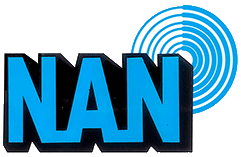5 Strategies For Achieving A Healthy Work-Life Balance in 2024
In the dynamic landscape of 2024, achieving a healthy work-life balance has become more crucial than ever. With advancements in technology blurring the lines between professional and personal life, it’s essential to adopt effective strategies to ensure well-being and productivity. In this blog post, we’ll delve into some practical strategies tailored to the demands of 2024, helping you strike that elusive equilibrium between work and life.
Here Are 5 Strategies For Achieving A Healthy Work-Life Balance
Set clear boundaries:
In today’s interconnected world, it’s easy for work to spill over into personal time. Setting clear boundaries means defining specific times for work and leisure. This could involve designating “work-free” zones at home, turning off notifications during non-working hours, and communicating your availability to colleagues and clients.
Prioritize tasks:
Not all tasks are created equal. Prioritizing your workload based on urgency and importance can help you focus on what truly matters. Utilize tools like task management apps or techniques like the Eisenhower Matrix to categorize tasks and allocate your time and energy efficiently.
Embrace flexible work arrangements:
With remote and hybrid work models gaining popularity, embrace the flexibility they offer. Negotiate flexible work hours or remote work options with your employer, allowing you to tailor your schedule to suit your productivity peaks and personal commitments. Embracing flexible work arrangements entails adapting to a work structure that allows for variations in time, location, or task allocation. It acknowledges that productivity and performance can thrive outside traditional office settings and rigid schedules. By embracing flexibility, individuals and organizations can leverage technology and modern work methodologies to achieve a better work-life balance, enhance employee satisfaction, and improve overall productivity and creativity.

Practice mindfulness and self-care:
Additional mindfulness techniques, such as deep breathing exercises, can lessen stress and enhance general wellbeing. To refuel and revitalize yourself, make self-care activities a regular part of your schedule. Some examples of these activities include exercise, hobbies, and spending time with loved ones.
Acquire the ability to delegate:
You can work with others. Whether at work or home, assign assignments that others can do successfully. Effective delegation not only lightens your workload but also empowers your team and fosters trust and collaboration.
Explaining the Strategies:
Setting clear boundaries:
When you set clear boundaries, you’re essentially creating a structure that separates work time from personal time. This could mean establishing a designated workspace at home and sticking to specific working hours. By doing so, you signal to yourself and others when it’s time to focus on work and when it’s time to unwind and recharge. Setting clear boundaries is a fundamental aspect of maintaining a healthy work-life balance. It involves defining and communicating limits to protect your time, energy, and wellbeing.
By establishing boundaries, you create a structure that separates work responsibilities from personal life, helping you to avoid burnout, manage stress, and prioritize self-care. Clear boundaries also promote productivity by allowing you to focus entirely on work during designated hours and unwind without interruptions during leisure time. Ultimately, setting clear boundaries empowers you to create a balanced and fulfilling life where both professional and personal needs are met.
Prioritizing tasks:
Prioritization is about understanding the importance and urgency of each task. Important and urgent tasks should take precedence, while less critical tasks can be scheduled accordingly. This strategy prevents you from feeling overwhelmed and ensures that you tackle essential tasks efficiently.
Embracing flexible work arrangements:
Flexibility in work arrangements acknowledges that productivity doesn’t always adhere to a strict 9-to-5 schedule. By negotiating flexible work options, you create room for a more balanced approach, where you can optimize your productivity during your most productive hours and accommodate personal responsibilities without compromising on work quality.
Practicing mindfulness and self-care:
Mindfulness and self-care are crucial components of maintaining a healthy work-life balance. Practicing mindfulness lowers stress by keeping you focused on the now and enhancing mental clarity. Incorporating self-care activities into your routine ensures that you prioritize your well-being, which eventually supports your capacity to function effectively on a personal and professional level.

Self-care encompasses activities that nurture your physical, emotional, and mental health ( https://cbd.co/delta-9/delta-9-vape/ ). This can include regular exercise, adequate sleep, engaging in hobbies, spending time with loved ones, and setting aside time for relaxation and reflection. Prioritizing self-care allows you to recharge and replenish your energy, leading to greater productivity, happiness, and fulfillment in both your personal and professional life.
Learning to delegate:
The ability to delegate helps your team collaborate and build trust while also reducing your workload. Effective task delegation enables you to concentrate on high-priority duties while allowing others to offer their knowledge and abilities.
Conclusion:
In 2024, achieving a healthy work-life balance will necessitate a multidimensional strategy that includes delegation, self-care, clarity in boundaries, effective prioritization, flexibility, and mindfulness. By implementing these strategies tailored to the demands of modern life, you can cultivate a harmonious equilibrium between work commitments and personal wellbeing, leading to increased productivity, satisfaction, and overall quality of life.




